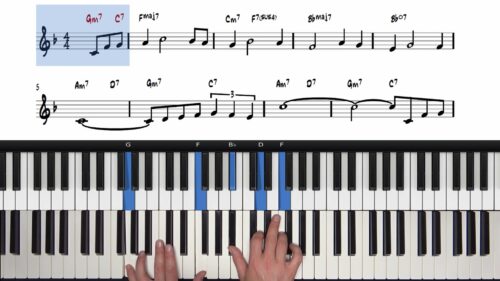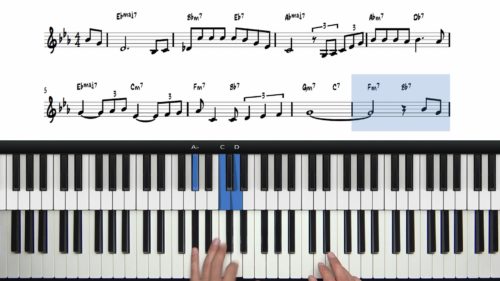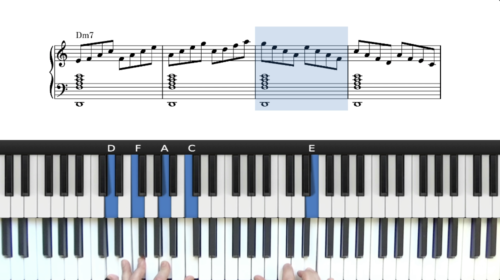6th & 7th Chord Shapes
In the previous lesson we explored a series of melodic drills using triads and the chromatic tones that exist within the triad shape. We will now introduce additional chord tones (the 6th and 7th of each chord) to create more interesting and varied melodic pathways.
Visualising Shapes & Tones
We demonstrate specific exercises which outline the 6th and 7th tones of each chord and how these shapes can be used to add structure to our improvised solos.
We practice these exercises over the 3 primary chords in the 12 bar blues – F7, Bb7, and C7 – emphasising the importance of visualising the chord shapes of the underlying harmony.
Space Fillers & Passing Chords
After practicing the basic shapes and patterns, we add the space fillers onto the end of our melody lines which allows our improvised solos to breath. Single note melodies combined with space fillers are particularly effective over two-bar stretches of the same chord.
To round up the lesson, we explore the use of passing tones, such as the major seventh, which, although dissonant, can create tension and release within our improvisations.
Finally we touch upon chord melody technique where the right hand plays both a chord and a moving melody line simultaneously to create a bigger and fuller sounding performance.
Lesson Downloads
-
6th Chord Melodic Ideas File Type: pdf
Practice Tips
-
Familiarise yourself with the shapes of F7, Bb7, and C7 chords and how the tones of these chords can be applied melodically.
-
Aim to create melodic variety by alternating between lines using basic triads and those containing the 6th and 7th tones.
-
Blend the melodic lines we've learned so far with the space fillers that we covered in the 3rd module of this course.
-
Record your improvisations and listen back to them afterwards.







